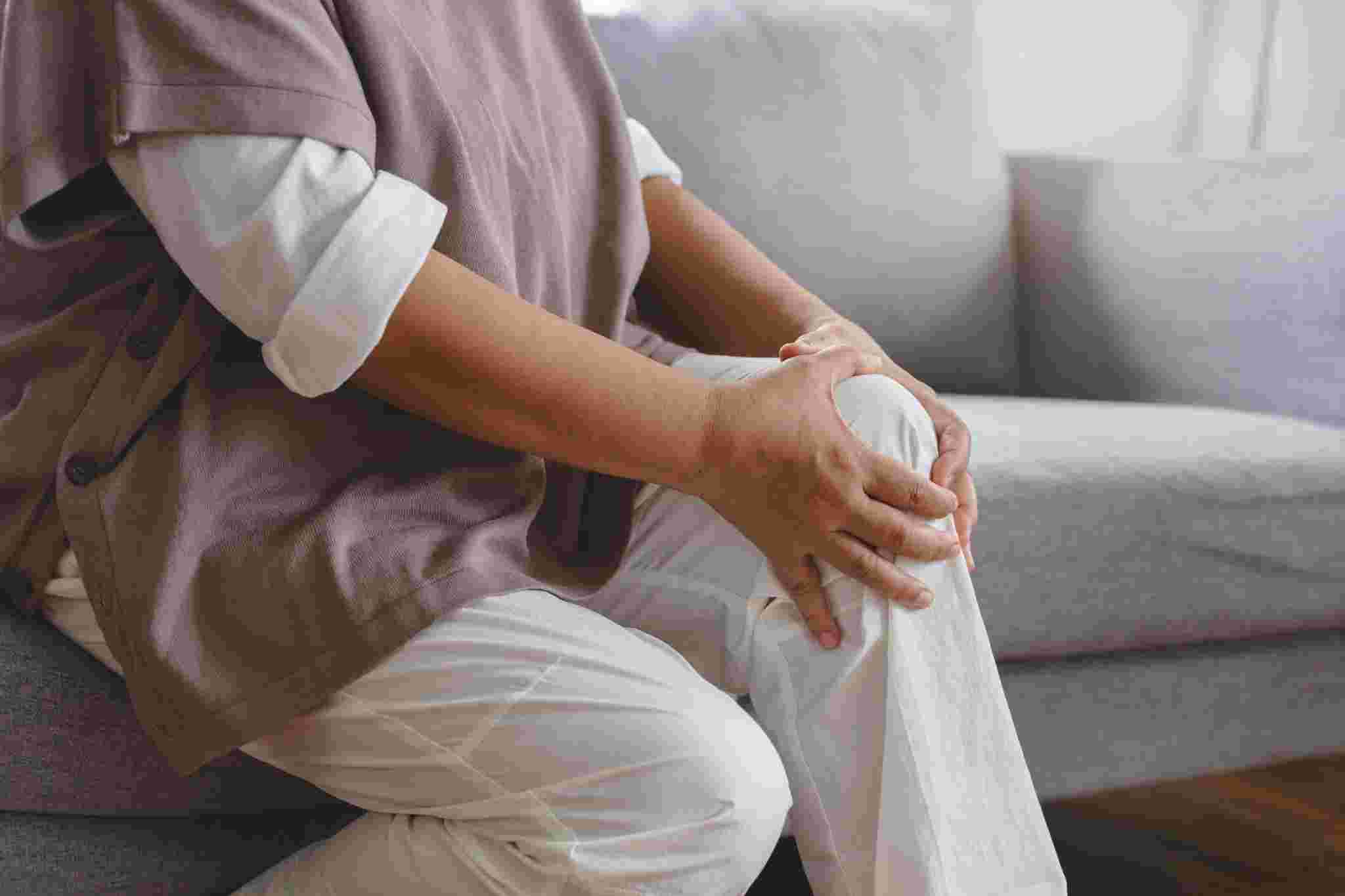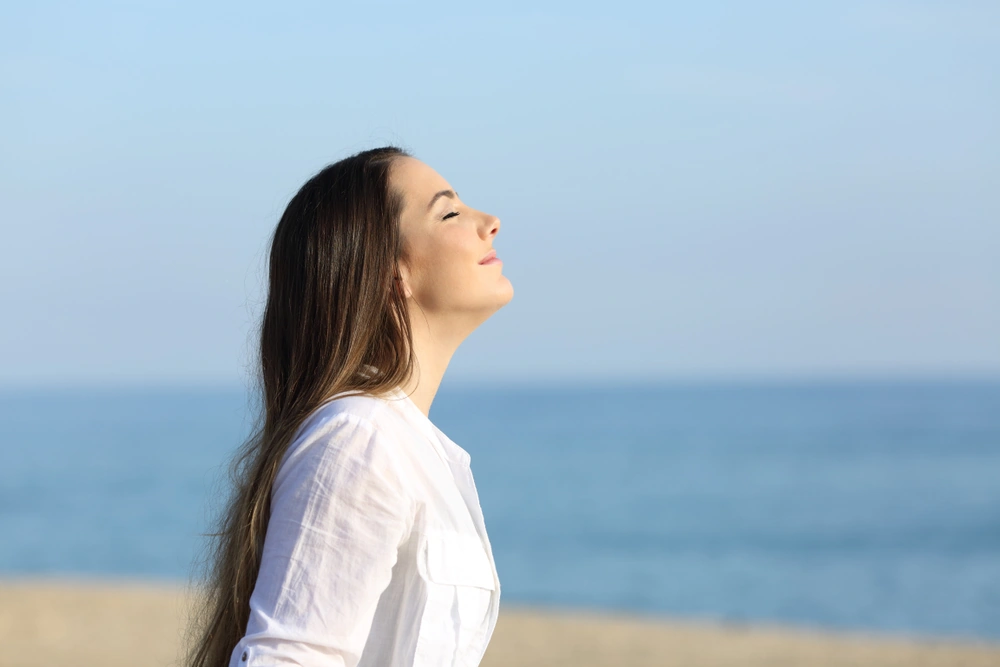Dealing with knee pain can be a challenge, especially when basic remedies like rest, ice, or over-the-counter medications don’t seem to help. Many people turn to alternative methods, such as finding the right pressure point for knee pain, to alleviate discomfort naturally.
If you’re not comfortable with the idea of needles, acupressure may offer an ideal alternative. This Traditional Chinese Medicine (TCM) technique involves applying gentle pressure to specific points on the body to alleviate discomfort.
In this article, we’ll explore how acupressure works, discuss the best pressure point for knee pain, and share practical tips for finding and using these points effectively. Ready to dive in?
How Does Acupressure Help Relieve Knee Pain?
Acupressure uses targeted pressure on particular points, or “acupoints,” across the body to encourage the flow of energy, or Qi. This energy flows through channels known as meridians, which connect to specific organs and systems in the body.
When you stimulate these leg pressure points, it activates these channels, helping improve blood circulation, reduce inflammation, and relieve pain.
The beauty of acupressure is that you can practice it anywhere, without the need for needles or specialised tools. By learning the appropriate points, you can apply acupressure to help manage knee pain, whether it’s a one-time issue or an ongoing concern.
The Science Behind Acupressure and Knee Pain
While Traditional Chinese Medicine practitioners have used acupressure for centuries, recent scientific studies are shedding light on its effectiveness. Researchers have found that pressing specific acupressure points for knee pain releases endorphins, the body’s natural painkillers. This release can help reduce pain and strengthen feelings of relaxation.
Additionally, acupressure stimulates blood flow and can improve the function of the vastus lateralis muscle—a key part of your quadriceps muscle group involved in stabilising the knee. Acupressure offers a non-invasive way to target muscle strain and knee discomfort without any side effects.
Top 9 Acupressure Points to Alleviate Knee Pain
Let’s go over some of the most effective acupressure points for reducing knee pain, as well as how to find and use them:
1. Stomach 35 (ST 35) – Calf’s Nose
Located just below the kneecap on the outer side, this acupoint is nestled in a small indentation when the knee is bent. By applying firm but gentle pressure to ST 35, you can relieve knee pain and stiffness. This point is especially beneficial for those who experience pain during activities like walking or climbing stairs.
To stimulate ST 35, use your thumb to press down on the point while seated. Hold for about 2-3 minutes, breathing deeply to promote relaxation.
2. Stomach 36 (ST 36) – Three Mile Point
The Three Mile Point is about four finger-widths below the kneecap and slightly off to the outer side of the shinbone. In TCM, ST 36 is known to strengthen the body, invigorate the legs, and relieve pain. Activating this point not only aids in knee pain relief but also energises the legs and helps with digestion and immune support.
To apply pressure, use the tip of your index finger and press firmly. Maintain this pressure for about 2 minutes.
3. Spleen 9 (SP 9) – Shady Side of the Mountain
This point sits on the inner side of the knee, just below the top of the shinbone. SP 9 is particularly useful for reducing swelling and tension in the legs. Additionally, it can help with symptoms like vastus lateralis muscle pain and leg cramps.
Using both thumbs, gently press on SP 9 for 1-2 minutes. This can be especially soothing after a long day on your feet.
4. Gallbladder 34 (GB 34) – Sunny Side of the Mountain
GB 34 is found on the outer side of the knee, close to the top of the shinbone. It’s a well-known acupoint for relieving muscle tension and reducing leg pressure points. In addition to soothing knee pain, GB 34 is effective for overall muscle relaxation.
To activate GB 34, press down with your index finger, using steady pressure. Hold for about 1 minute and repeat on the other leg if needed.
5. Bladder 53 (B 53) – Commanding Activity
At the back of the knee, where the crease forms when the knee is bent, lies the Bladder 53 point. This point is beneficial for sciatic nerve pressure points, relieving pain associated with the sciatic nerve.
To apply pressure, press down gently with your thumb for about 2 minutes. This can ease knee pain and help with stiffness in the surrounding muscles.
6. Bladder 54 (B 54) – Commanding Middle
B 54 is positioned in the middle of the crease at the back of the knee. Activating this point is great for alleviating knee pain, as well as relieving discomfort associated with arthritis and sciatic nerve pain.
To target B 54, apply light pressure using your fingertips. This can improve mobility in the knee and reduce inflammation.
7. Liver 8 (LV 8) – Crooked Spring
This point is located on the inner side of the knee crease. LV 8 helps with knee pain and can also alleviate swelling and joint stiffness. In women, it’s also commonly used for menstrual pain and fibroids relief.
Using your thumbs, apply pressure to LV 8, holding for 1-2 minutes. Deep breathing during this process can improve the effect.
8. Kidney 10 (KD 10) – Nourishing Valley
Found on the inner edge of the knee crease between two tendons, KD 10 is effective for relieving knee pain and helping with abdominal pain. This point is especially helpful for those who suffer from both knee discomfort and digestive issues.
To stimulate KD 10, press with your thumb for 1-2 minutes. Repeat this process on the other knee for balanced relief.
9. Spleen 10 (SP 10) – Sea of Blood
Located about two inches above the kneecap on the inner thigh, SP 10 is a powerful acupoint for improving blood flow and relieving knee pain. SP 10 is also commonly used to treat skin conditions and promote healthier circulation.
Apply gentle pressure with your index and middle fingers, holding for about 2 minutes. Repeat as needed.
DIY Tools for Acupressure: Do Your At-Home Treatment
Incorporating simple tools into your acupressure routine can make your at-home sessions even more effective and convenient. Here are a few popular options to consider:
- Acupressure Mats: Covered in small, rounded spikes, acupressure mats stimulate various points across the body when you lie down on them. They’re ideal for relieving muscle tension and promoting relaxation in the legs and lower back. When positioned properly, they can also aid in alleviating knee pain.
- Acupressure Balls: These small, portable balls are easy to use and can be rolled under your foot or leg to target specific acupressure points. Acupressure balls are particularly effective for reaching smaller points around the knee and can be used anytime—whether you’re sitting or lying down.
- Handheld Massagers: For more consistent pressure, handheld massagers offer adjustable intensity settings and different attachments to reach various acupoints. They’re excellent for applying targeted pressure on deeper points, making them beneficial for reducing knee pain and muscle stiffness.
Adding these tools to your routine not only simplifies the acupressure process but also helps you achieve more targeted relief for ongoing knee discomfort.
Benefits of Acupressure for Knee Pain
Acupressure offers numerous benefits beyond simply alleviating pain. When practised regularly, it can contribute to overall knee health, improve blood flow, and boost flexibility in the muscles surrounding the knee.
Here’s a closer look at some of the key advantages:
- Natural Pain Relief: By stimulating specific acupressure points associated with knee pain, you can encourage the release of endorphins, your body’s natural painkillers, helping to alleviate discomfort without the need for medication.
- Increased Mobility: Practising acupressure regularly can help loosen tight muscles and improve the range of motion in your knee joint, making it easier to move comfortably throughout the day.
- Reduced Inflammation: Acupressure can help decrease inflammation, a common cause of knee pain, especially for those dealing with arthritis. By easing swelling, it promotes quicker recovery and better joint function.
- Stress Reduction: In addition to physical pain relief, acupressure has a calming effect on the body and mind. This relaxation helps reduce overall stress levels, which can further support pain management and improve overall well-being.
By integrating acupressure into your routine, you can enjoy these benefits and support your knee health in a natural, holistic way.
Techniques for Using Acupressure on Your Own
Self-acupressure is a simple and effective way to improve knee health, helping you take control over any discomfort you may be experiencing. Here are some essential tips to help you make the most out of this technique:
- Find a Comfortable Position: Sit on a chair or lie down in a relaxed position. Make sure your legs are straight, allowing you to easily access the pressure points on your knees.
- Use Your Thumbs or a Handheld Massager: You can use your thumbs to apply pressure, but for a more consistent effect, consider using a handheld massager. This tool is especially helpful for reaching deep pressure points, such as those affecting the sciatic nerve.
- Apply Steady Pressure: Use firm yet gentle pressure on each point for about 1-2 minutes. Release the pressure briefly, then repeat as needed. Avoid pressing too hard, as this can cause discomfort.
- Breathe Deeply: Inhale deeply as you apply pressure and exhale slowly as you release it. Deep breathing not only helps you relax but also strengthen the effects of acupressure on your body.
With these simple techniques, self-acupressure can become a powerful tool for maintaining knee health and promoting overall relaxation.
Common FAQs About Pressure Point for Knee Pain
Is Acupressure Safe for Everyone?
Yes, acupressure is generally safe for most people. However, if you have a chronic condition, consult your doctor before beginning acupressure therapy, especially if you have concerns about any acupuncture for knee pain points.
How Often Should I Apply Acupressure?
You can perform acupressure on yourself up to three times a day. Regular practice helps reinforce the benefits and offers long-term relief.
Does Acupressure Work for Osteoarthritis?
Yes, acupressure points for knee pain can be beneficial for osteoarthritis. By improving blood circulation, acupressure can help reduce swelling and stiffness, improving joint function over time.
Can Acupressure Replace Medication?
While acupressure is effective for many, it’s not a replacement for medical treatment. Use it as a complementary therapy to manage pain and support your overall treatment plan.
Finding Relief Through Acupressure for Knee Pain
Understanding the correct pressure point for knee pain and using acupressure techniques can be a natural, effective way to manage knee discomfort. With regular practice, acupressure offers a holistic approach to supporting knee health, relieving pain, and boosting mobility.
Take Control of Knee Pain with Natural Remedies
Discover the power of pressure points for knee pain with massagers that make acupressure easier and more effective. Visit OSIM to find top-quality massagers designed to help you manage knee pain and improve your daily life.




